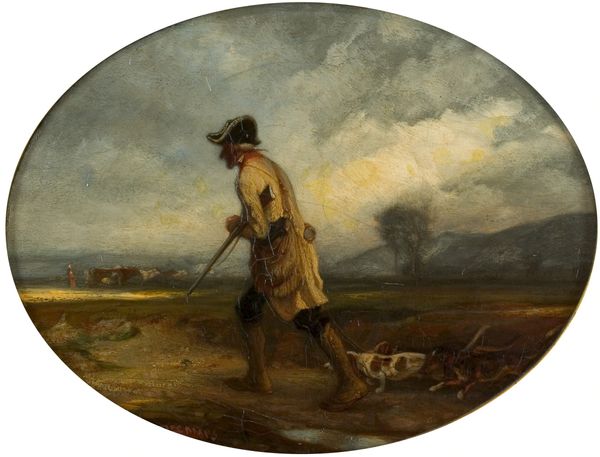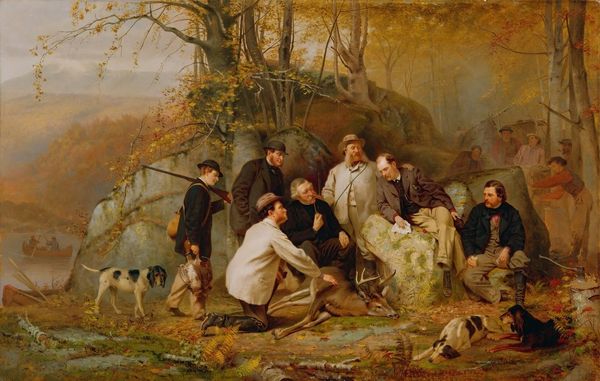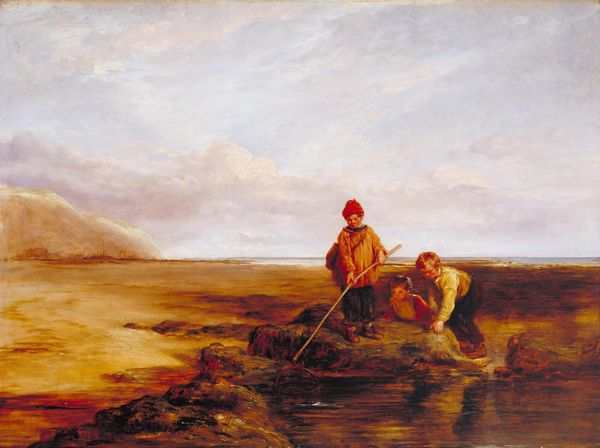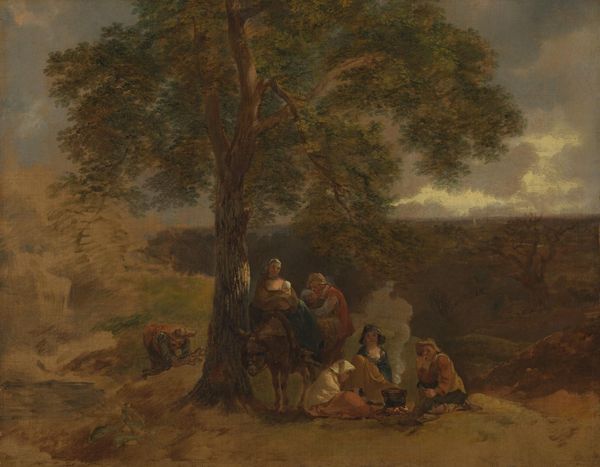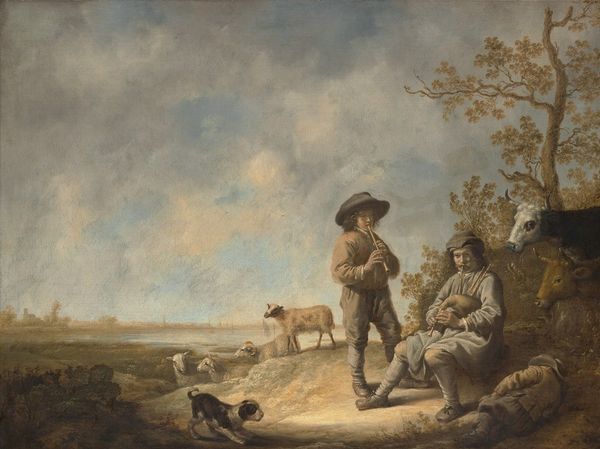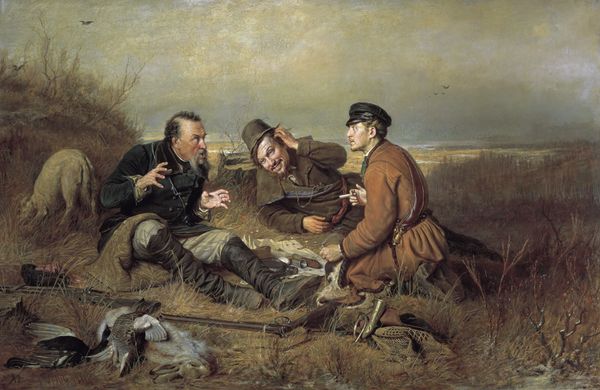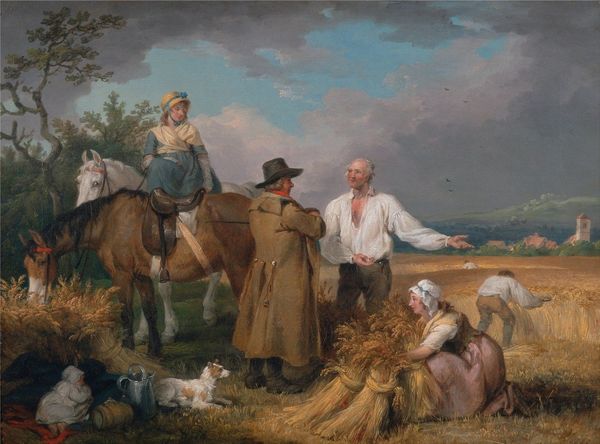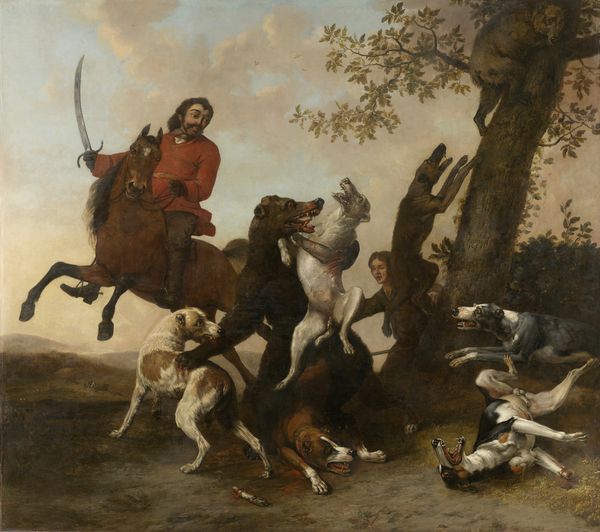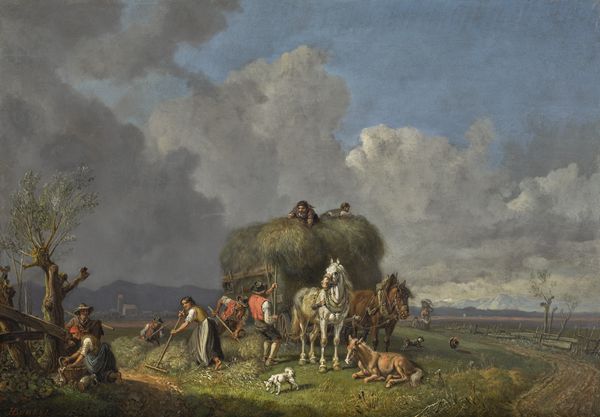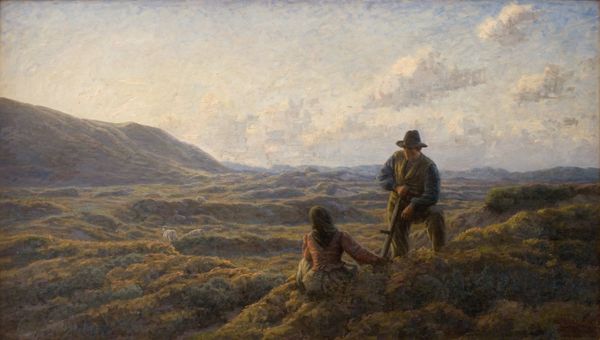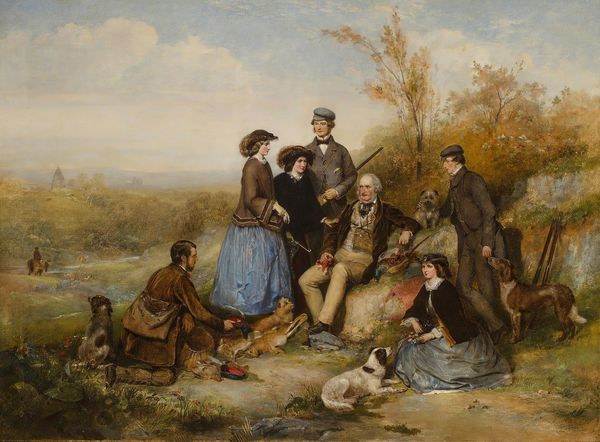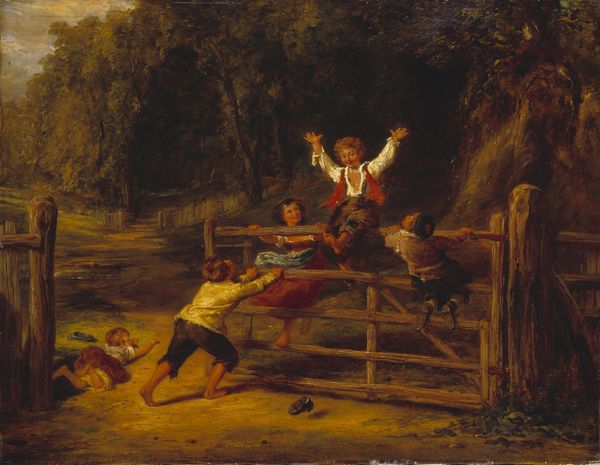
plein-air, oil-paint
#
narrative-art
#
plein-air
#
oil-paint
#
landscape
#
oil painting
#
animal portrait
#
genre-painting
#
realism
Dimensions: overall: 76.5 × 102.6 cm (30 1/8 × 40 3/8 in.) framed: 94 × 119.7 × 7.6 cm (37 × 47 1/8 × 3 in.)
Copyright: National Gallery of Art: CC0 1.0
Curator: Right, let's delve into William Tylee Ranney's "The Retrieve," painted around 1850. Editor: At first glance, I see a starkly hierarchical composition. The tension between human dominance, here exemplified through recreational hunting, and nature’s submission is almost palpable. Curator: Absolutely, that tension is key. Ranney was working in a time of westward expansion and burgeoning American identity, and his paintings often explore the evolving relationship between humanity and the environment. It's oil paint, plein air painting... The image depicts two hunters and their dog on a vast, open landscape after what appears to be a successful hunt. Editor: This work fits squarely into the genre painting tradition of the time, which served to legitimize class structures in many ways. The hunters, presumably of means given their attire and leisure activity, are clearly in control. The dog is rendered as an implement to their gain, eagerly anticipating its reward. Curator: I agree, and that dynamic touches on deeply embedded attitudes about race, class, and access to land and resources. Looking closer, there’s a complex dynamic at play concerning the idea of civilization versus the wild, seen by how Ranney contrasts the details. Editor: Note the slightly ominous sky in the distance; Ranney doesn't completely elide the threat of unmanaged natural forces despite the scene's air of accomplished leisure. One must wonder whether a subtle unease haunts even these successful sportsmen. Curator: The light really does imbue the scene with some uncertainty, doesn't it? Yet this uncertainty becomes a crucial part of the painting's dialogue with its audience, suggesting the multifaceted role nature would play in constructing the United States of the time. The painting subtly raises the viewers’ awareness on these power dynamics at play in both art and society. Editor: Precisely. The canvas encapsulates both a specific historical moment, and, through a critical reading, it confronts our assumptions about who has had, and continues to have, dominion over the landscape. Curator: Indeed. "The Retrieve," seemingly a straightforward depiction of a hunt, unravels into a contemplation about power, land ownership, and shifting cultural values of mid-19th century America. Editor: It’s in engaging with art like Ranney’s that we are challenged to assess not only historical aesthetics but also current and continuing dynamics about accessibility, resource distribution, and intersectionality within a global context.
Comments
No comments
Be the first to comment and join the conversation on the ultimate creative platform.
